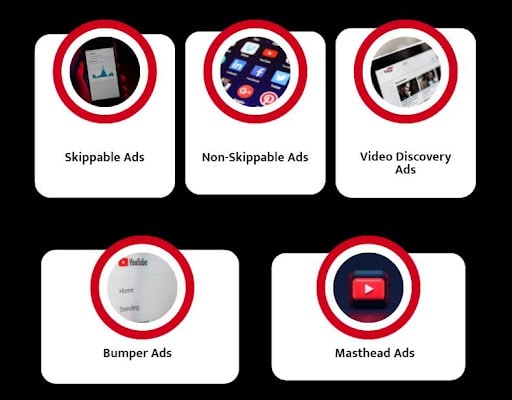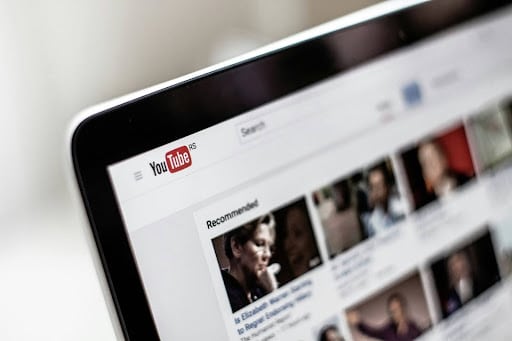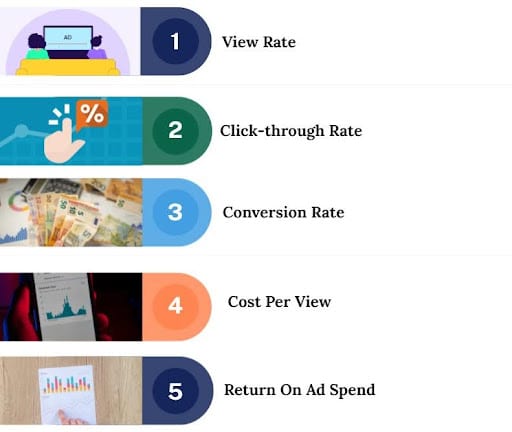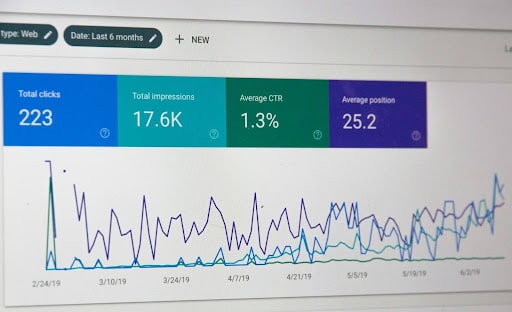Did you know paid YouTube ads can grab 84% more viewers’ attention than traditional TV commercials? (Source: Think With Google)
This may come as a surprise, but 90% of companies have already seen the booming ROI. (Source: Zippia)
This is meant to happen.
In today’s era, where people watch countless videos on YouTube, businesses are flocking to the platform to reach their target audience.
It is working for them immensely in developing a connection with the visitors, increasing engagement, and ultimately, super ROI. So, why would you be left behind?
Our guide will walk you through YouTube advertising, formats, crafting compelling ads, strategies for advanced YouTube videos, and more.
So, stay connected until the end.
| Highlight: How To Promote Video With YouTube Ads? → Create a Google ad account → Set your YouTube ad campaign goals → Compelling creative ad ideas → Combine technical and deep understanding of audience behavior → Measuring and optimizing the ad campaign → Make a strategic approach Avoid common mistakes |
Understanding YouTube Ads

What are YouTube Ads?
YouTube Ads are a paid advertisement system that promotes your YouTube video to the right audience. You will have mass audience exposure when you align your free YouTube video with paid advertising.
This tool mainly works for businesses to reach the target audience, increase brand awareness, and drive conversion. If you ask how it happened, the answer is Google, not SEO, but Google.
Google leverages its data and capabilities to match YouTube ads to the relevant audience. They will make sure that your campaign is running successfully.
Types of YouTube Ads
You will see different types of YouTube ad formats that cater to your needs and budgets. Each type offers something great for your video and the campaign.
1. Skippable In-Stream Ads
These are the most common ad formats you will see in YouTube videos. These ads come before, during, and after a video; your audience can skip them after 5 seconds. They are the best way to bring brand awareness and web traffic to your video.
2. Non-Skippable In-Stream Ads
As the name suggests, these ads need to be watched at full length before the actual video starts. Don’t worry; these videos are shorter than the skippable ads, allowing them to impose a stronger brand impression.
3. Video Discovery Ads
These ads appear alongside related videos, watch pages, or search results. They look similar to the actual video but are shown as ads. When viewers are looking for the video, your ad video will also appear on the screen.
4. Bumper Ads
Short videos with a six-second ad duration that can’t be skipped are the most jump-packed option ever. These videos have the incredible ability to create a quick, memorable impression on your target audience.
5. Masthead Ads
If you are launching a product or a campaign on YouTube and want to allocate a day to promote it, Masthead Ads are highly recommended. These premium ads will give you one day to be top-placed on the YouTube Homepage page for your promotion.
Setting Up Your YouTube Ad Campaign

Creating a YouTube Ad Account
If you want to start your YouTube ad journey, your starting point is creating a Google ad. The reason is that Google ads manage YouTube ads, so there is no reason to make another one. If you already have a Google ads account, then all you have to do is merge it with YouTube ads.
Step by Step guide to set up a YouTube ads account:
- Create a Google account if you don’t have one
- Linked your verified YouTube channel
- Navigate to the campaign tab with the Google account
- Create a new campaign with the video type and the goal
- Choose your ad format (Skippable, non-skippable)
- Set the campaign setting with its name and date of start and end
- Organize ads into ad groups based on the theme or targets
- Upload your video ad with clear CTA
- Define your target audience demographics
- Choose your payment method
- Review and launch
Defining Your Campaign Goals
You can’t shoot a shot if you don’t know where to aim. The same goes for marketing. Before you start with your advertising, you will need to outline the goals you are setting for this campaign.
- Align with your overall marketing strategy: You will need to develop a YouTube strategy that complements your overall marketing objectives. You can’t run YouTube ads that don’t align with your other marketing plans.
- Specific and measurable goals: There is a term in marketing that says SMART. It means specific, measurable, achievable, relevant, and time-bound. These five things will determine how your goals are going through tracking.
- Examples of common goals:
- Brand awareness to bring more visibility and recognition to the brand
- Lead generation to collect information from potential customers
- Website traffic to your website and landing page
- Sales of your products and services
- Subscribe growth to expand your YouTube channel
Budgeting and Bidding Strategies
Setting a Budget
There are several things to consider when making a budget for YouTube advertisements. If you don’t set a proper budget, you will likely spend more than you can afford.
The key factors that require to be in mind are campaign goals, target audience size, competition in the market, cost of CPC, and available budget you have for the ads.
Tips on setting a budget:
- Start with a realistic budget to avoid overspending
- Increase or decrease budget based on results
- Considering daily budget to control overspending
- Utilizing bidding strategies for better results
Bidding Strategies
Bidding strategies will help you maximize your ad spend and ensure that you spend as much as you need. You don’t have to worry about breaking the bank since there are a variety of options that will suit your campaign objectives.
Common bidding strategies:
- Set a maximum amount you are willing to pay per click
- Set a target cost per action marketing
- Aims for more most clicks within your budget
- Optimize for maximum video views
- Set a target return on ad spend
Targeting the Right Audience
The main goal of running a campaign is to reach the target audience. Your campaign success rate will depend on the audience watching your videos. To do so, you will have to know who your target audience is.
- Demographic targeting: Reach audience based on their age, gender, location, and language.
- Interest targeting: Target audiences based on their interests and preferences.
- Behavioral targeting: Reach your users based on their online behavior and actions.
- Custom marketing: Create targeted audience lists by their email subscribers, YouTube subscribers, and website visitors.
- Remarketing: Re-engage previous website visitors and video viewers with tailored ads.
Crafting Compelling Video Ads

Creating Engaging Content
The most important part of YouTube ads is the first five seconds. As you can guess, nobody likes to watch full ads, but if you get at least five seconds to allure your audience, then you have the deal. So, all you need to do is make those five seconds count.
Here are the tips for you to shine your ads in those 5 seconds:
- Striking visual: Use animation or images that will grab attention within seconds.
- Gripping question: Throw a question that will spark curiosity or suspense for viewers to watch the rest.
- Problem and solution: Introduce a problem and show a quick solution for it.
- Features highlight: Showcase all the primary features of your products with clear communications.
- Call to action: Give your audience a clear direction, even if the main CTA comes later.
Importance of Storytelling and Brand Message
There is no denying that strong storytelling can have a profound impact on the viewers. The more you work on the storytelling, the more you get the audience’s attention. They will remember your ad because of the footprint you can leave through your ads.
We suggest you develop stories that will string your audience’s hearts. Show them what your brand products offer that other competitors can’t bring to the table.
Keep your brand message clear and concise with relatable characters throughout the strategy so that it can evoke your audience’s emotions.
Optimizing Video Length and Format
Now, coming to your video length. Here, the video length will determine your ad format. In our previous YouTube-type section, we discussed the ad format. Here, we will tell you how your video length depends on the ad type.
- Skippable Ads: Since these videos are skippable, you will need to keep them concise and aim for 15 seconds of watch.
- Non-skippable Ads: Take up to 15 to 20 seconds to deliver your message to the audience.
- Bumper Ads: Keep it short and to the point only for 6 seconds.
- Video Discovery Ads: Here, the length isn’t the issue. Just focus on creating a compelling thumb line to get more clicks.
Technical specifications:
- The video format should be MP4
- High-quality visuals in 1080p are the ideal resolution
- The standard ratio you can use is 16:9 for widescreen and 9:16 for vertical
Using Call-to-Actions Effectively
- Direct CTA: Don’t beat around the bush. Use action-oriented language like “Shop Now,” “Learn more,” or “Download Now” in the ads.
- Ideal Placement: Use your creative side of the brain, and place the CTA in one at the beginning and the end of the ad based on your ad format and goal.
- On-screen Text: Keep the CTA with on-screen text for better visibility.
- Consistency: Practices the same CTA throughout your marketing materials for brand recognition.
Measuring and Optimizing Your YouTube Ad Campaign

It’s time to evaluate the performance of YouTube ad campaigns. As you are putting so much effort into the campaign, it becomes mandatory to track its real-time performance. To understand the performance, it is important to monitor the key metrics.
Key Metrics to Track
- View rate: Here, you will see how many viewers watch the ad for at least 30 seconds before they skip it.
- Click-through rate: You will get to know the percentage of people who are clicking on your ad.
- Conversion rate: The number of people who take action, like purchasing or signing up for the product or service, after clicking on your ad.
- Cost per view: The average amount you pay for each video view.
- Return on ad spend: The revenue you generate for every dollar spent on advertising.
Interpreting Metrics:
- Engaging ads indicates a high view rate and CTR
- Effective targeting ad copy shows high conversion rates
- Reports efficient ad spending through low CPV and CPC
- High ROAS demonstrates a profitable campaign
A/B Testing Your Ads
It becomes easy when you have two versions of an ad and can compare their performance to evaluate which one is bringing more success. This is what marketers call A/B testing.
Let’s see what is here to test:
- Ad copy: You can incorporate different headlines, descriptions, and calls to action.
- Video length: Keep a keen eye on the length to discover what connects your audience most.
- Visual: Experiment with a different type of thumbline, opening scene, and overall visual style.
- CTAs: Try out different call-to-action placements and wordings.
- Targeting: Targeting different groups of people to see who engages more with the ads.
Making Data-Driven Adjustments
Your YouTube ads won’t be getting better without exclusive data. When you have data in your hand, you will know how to use metrics to make decisions without any delay. As many say, data is the lifeblood of marketing, so you can also guess how much it imposes into YouTube ad campaigns.
- Analyze performance: Regularly review and check your campaign metrics to know which trends and patterns are going on.
- Refine targeting: Shuffle your target audience based on performance data.
- Optimizing targeting: Modify your bidding strategy now and then to improve ad placement.
- Monitor competitors: Keep your eyes on the competitor’s campaigns to identify opportunities.
- Set clear goals: Use SMART to analyze the performance better through data.
Advanced YouTube Ad Strategies

Leveraging YouTube Analytics for Deeper Insights
If anything can significantly impact video marketing strategy, YouTube Analytical is the go-to name. It is a goldmine of data that can uncover invaluable insight about your audience.
How to use YouTube Analytics to refine your video marketing strategy?
- Use demographics, interests, and geographic data to identify your core audience.
- Analyze metrics like watch time and click-through rate to understand video performance.
- Identify your video’s performance on various devices to tailor the ad format accordingly.
- Set up conversion rate tracking to measure the impact of your YouTube ads action.
- Experiment with different types of ad formats to find which ones are the most effective.
Advanced metrics and what they tell you about audience behavior:
- Average view duration indicates how engaging your content is.
- Click-through rates measure the effectiveness of your ad’s title.
- Audience retention tells how long viewers stay connected with your video.
- Demographics and interest shed light on the target audience’s characteristics.
Integrating YouTube Ads with Other Marketing Channels
Another way you can increase exposure for your marketing efforts is to integrate YouTube ads with other channels. This can drive better results and reach twice the number of others.
Cross-channel promotion strategies:
- Social media integration: Publish your YouTube videos on other social media channels to increase visibility and drive traffic.
- Email marketing: You can include YouTube links in your email campaign to engage subscribers.
- Website interrogation: Embed YouTube videos on your website to enhance user experience and SEO.
Case studies on successful integration of YouTube ads:
Example One: GoPro
GoPro, the action camera company, has shown full-blown success in integrating its YouTube ads with other marketing channels. The company makes its brand presence active on platforms like FaceBook, Instagram, and TikTok by sharing its content.
Example Two: Dollar Shave Club
Dollar Shave Club integrates platforms like Facebook and Twitter with its YouTube ads. The company shared its YouTube video to gain maximum reach and engagement.
Scaling Your Campaign
Scaling the campaign means increasing the budget, but it will be worth it when you see the expanded reach for your ad. So, get ready to improve your campaign performance before your rival does it first.
When and how to scale your campaign for broader reach:
- Focus only on high-performing campaigns that give more extensive results.
- Expand targeting audiences by adding new demographics and interests.
- Raise your bid to improve ad visibility for a broader audience.
- Find more growth opportunities with different ad formats.
Tips on managing larger budgets and complex campaigns:
- Set clear objectives
- Track key metrics
- A/B strategies as different approaches
- Utilize automation tools
- Collaborate with digital marketing experts
3 Common Mistakes to Avoid

1. Poor Targeting
How can you succeed in a YouTube ad campaign when you don’t even know who your target audience is? You are not going to sell your sports gear to non-athletic people, right? There are still so many businesses that display ads to irrelevant people. This isn’t only a waste of money but also damages your brand reputation. Knowing the target audience before you start marketing your ads is a must.
2. Overlooking Mobile Optimization
It will be a silly mistake if your YouTube ads aren’t optimized for mobile views. Since billions of people, including you, watch videos on mobile, optimizing the ads for mobile is mandatory. When you fail to do it, you are losing potential customers and going unnoticed. Mobile ads must be visually appealing and have a seamless user experience.
3. Ignoring Post-Campaign Analysis
Learning from mistakes is important for improvement. This also applies to YouTube ad campaigns. Analyzing previous campaigns helps you understand what worked and what didn’t. It’s important to use this information to refine your strategy for long-term success.
And So It Ends!
Now that we have shown you the path to attain maximum success through YouTube ads, you are ready to unpack immense drive engagement and achieve marketing goals. If you want to succeed, concentrate on compelling ad ideas, target the right audience, and optimize using data-driven insights. You can also take expert advice. LocalEyes can help you come up with top-notch ideas for your YouTube ad content.
Frequently Asked Questions
Skippable in-stream ads are the most popular among beginners. The reason behind this is that they are flexible and budget-friendly.
YouTube ads can be cost-effective compared to other marketing strategies. The budget can be as low as $10$ to 50% per day. However, the ideal budget depends on your camping goals, target audience, and competition.
To do so, you will have to combine demographic, interest, keywords, and custom audiences to reach the target audience who are seeking your videos.
Yes, absolutely. YouTube offers various metrics to measure your campaign performance. You can calculate your ROI by tracking clicks, views, conversion rates, and CPA.
You can update your YouTube ads every day; this will improve the performance of your videos. You can also monitor metrics and adjust the ads according to them.

Founder at LocalEyes Video Production | Inc. 5000 CEO | Emmy Award Winning Producer



